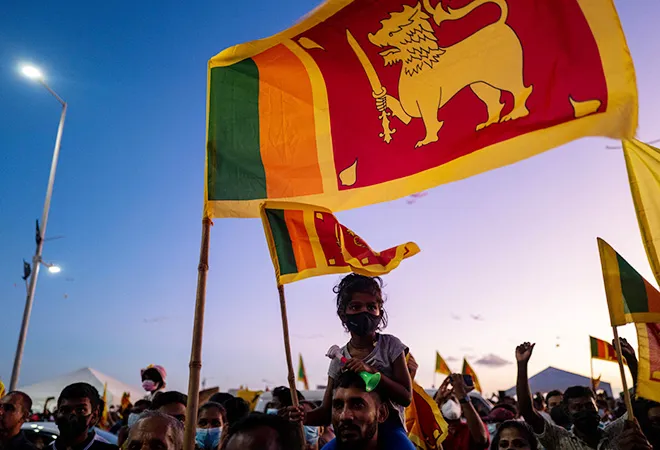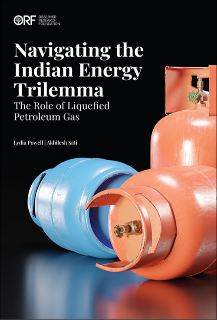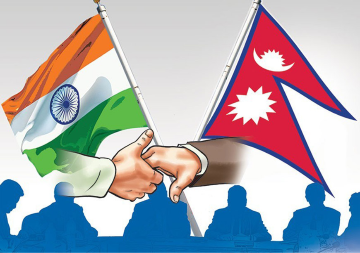
On 1 April 2022, the Sri Lankan government declared a state of Emergency in the country. The economic, food, and energy crisis in the country is now contributing to a full-fledged political crisis. For a long time, Sri Lanka had been trying to mitigate and avert this situation by upping its balancing game between India and China, and extracting maximum cheques and benefits from them. However, this tightrope walk alone cannot and will not function as a potion to the troublesome economy. Further, a mere balancing will only postpone the crisis and do more harm than good for all the concerned stakeholders.
How did Sri Lanka get here?
Despite transiting into a middle-income country, Sri Lanka has failed to attract Foreign Direct Investments (FDI) or diversify and improve its export revenues. It has rather sustained its growth through International Sovereign Bonds (ISB) and by borrowing from other countries—often at high interest rates and short payback periods. Overall, this contributed to external debt of US$35 billion by 2021. In this context, China also gradually became one of the top loan providers for the island state (refer Table 1).
Table 1: Sri Lanka’s creditors and outstanding debts
| Creditor |
ISB |
Asian Development Bank |
China (total lending) |
World Bank |
Japan |
India |
| Outstanding debts (in %) |
36% |
15% |
20% |
10% |
9% |
2% |
Source: The Diplomat
However, the loan repayment situation worsened in recent years with the reduction of tax revenues; COVID’s impacts on tourism, supply chains, and remittances; and also, the arbitrary decision to move to organic farming. This contributed to inflation and the reduction of the country’s foreign reserves, even though its repayment commitments remain unchanged. The depleting foreign reserves have thus impacted its food, fuel, and other necessary imports, and have caused a multi-faceted crisis. And to make matters worse, Sri Lanka’s sovereign bonds will also be maturing every year till 2030. As a result, Sri Lanka is left with a meagre foreign reserve of US$2.3 billion whilst having to repay a debt of US$7 billion this year.
Upping the balance game:
Sri Lanka had, thus, tried to mitigate or avert the crisis by balancing between India and China, and reaping maximum concessions from both. As a result, the Rajapaksa government at first belittled Indian interests and had grown notoriously close to China. In 2021 alone, Sri Lanka unilaterally cancelled its East Container Terminal project with Japan and India; offered a few energy projects to a Chinese firm in the Jaffna peninsula; and also passed the Colombo Port City Economic Commercial Bill. These appeasements ushered in several Chinese incentives in terms of currency swaps, Foreign Currency Term Financing Facility (FCTFF), grants, and fresh loans.
The credit lines and currency swaps are intended to help Sri Lanka address its immediate concerns, whilst the modernisation and investments approach will provide a long-term solution to Sri Lanka’s economy.
However, as the disagreement with China intensified on the fertiliser issue, Sri Lanka began playing its India card against the former. Parallelly, India also saw this as an opportunity to reassert its influence in the island state. India’s fertiliser delivery to Sri Lanka on the latter’s request further highlighted this foreign policy tilt. This was soon followed up with India’s four-pronged economic and financial assistance approach to Sri Lanka. This includes credit lines for the import of food, fuel, and medicines; currency swaps to boost foreign exchanges; modernisation; and holistic investments, in the sectors of renewable energy, ports, logistics, infrastructure, connectivity, and maritime security.
The credit lines and currency swaps are intended to help Sri Lanka address its immediate concerns, whilst the modernisation and investments approach will provide a long-term solution to Sri Lanka’s economy. In return for these incentives, Sri Lanka has also begun showing more sensitivity and acceptability to Indian interests and investments. This grew evident with Sri Lanka’s cancellation of the Chinese energy projects in the Jaffna Peninsula and the finalisation of the West Container Terminal deal with the Adani group.
Thus, starting from late 2021, India has offered credit lines and currency swaps worth US$2.4 billion. This is besides Sri Lanka’s new request for additional assistance of US$1.5 billion. India has also signed a new Memorandum of Understanding (MoU) to develop the Trincomalee Oil Tank Farm. And as a part of the final measure, India has signed new renewable energy contracts in northern Sri Lanka and is attempting to promote connectivity in the region.
India is also offering a free Floating Dock Facility and a Dornier Reconnaissance Aircraft to Sri Lanka, along with a training team. In addition, Sri Lanka has also agreed to establish a Maritime Rescue Co-ordination Centre (MRCC) in Colombo with the help of Bharat Electronics Limited. With this agreement, the island state will be hosting seven MRCC sub-unit naval bases in the country, including one in the Hambantota port—a move that can make China even more uncomfortable and assertive of its influence in Sri Lanka.
Nonetheless, this four-pronged approach has mutual benefits for both India and Sri Lanka. They are largely helping Sri Lanka to be more self-sufficient, whilst also underlining India’s role as a net-security provider in the Indian Ocean and South Asia.
Evidently, as the seventh round of FTA negotiations came to an end, China stated that it will be considering a loan and line of credit worth US$2.5 billion USD to Sri Lanka.
However, contradictory to India’s approach, China’s financial and economic assistance during the crisis has been passive. This is likely due to China’s unhappiness with Sri Lanka's shrewd balancing and foreign policy tilt. Whilst the Chinese Foreign Minister did visit the island state after the fertiliser disagreement, nothing was promised to address the latter’s request for debt restructuring.
On the other hand, Sri Lanka is also aware that it cannot completely sideline China, as the latter remains the single largest lender to the island state. The former has thus attempted to appease China by expediting the negotiations for a Free Trade Agreement (FTA). Evidently, as the seventh round of FTA negotiations came to an end, China stated that it will be considering a loan and line of credit worth US$2.5 billion USD to Sri Lanka. And given this new leverage against the island state, China will try to extend its tentacles and investments in northern Sri Lankaa move that will likely challenge and hurt India’s influence the most.
Opening the Pandora Box:
This economic crisis has thus left Sri Lanka more reliant on balancing and exploiting the India–China competition in the region. To be clear, this competition has offered Sri Lanka more sustainable deals and projects, and some de facto bailouts. Nonetheless, this balancing has also intensified the competition for influence and investments in the island state. To substantiate, India has already begun keeping an eye on the Hambantota Port and the Indian Ocean, whilst China has begun showing keen interest in signing the FTA and expanding to the northern regions of Sri Lanka. These developments are thus indicating the future directions of the competition within Sri Lanka, where one’s investments are leading to more politically and strategically competitive investments and interests by the other.
Similarly, for India, the economic crisis might be an opportunity to reassert its influence in the region. However, this proactive and renewed engagement also risks creating another ‘India Out’ moment in the neighbourhood. The Opposition has already been quick in politicising the recent renewable energy projects and defence pacts. In this case, China is likely playing safe with its passive approach. And in this case, if the International Monetary Fund (IMF) and World Bank negotiations do not fructify, Sri Lanka will be back to its ‘cheques and balances’ game, thereby postponing the crisis, intensifying the competition, and incurring significant domestic costs for itself as well as India.
The views expressed above belong to the author(s). ORF research and analyses now available on Telegram! Click here to access our curated content — blogs, longforms and interviews.




 PREV
PREV


